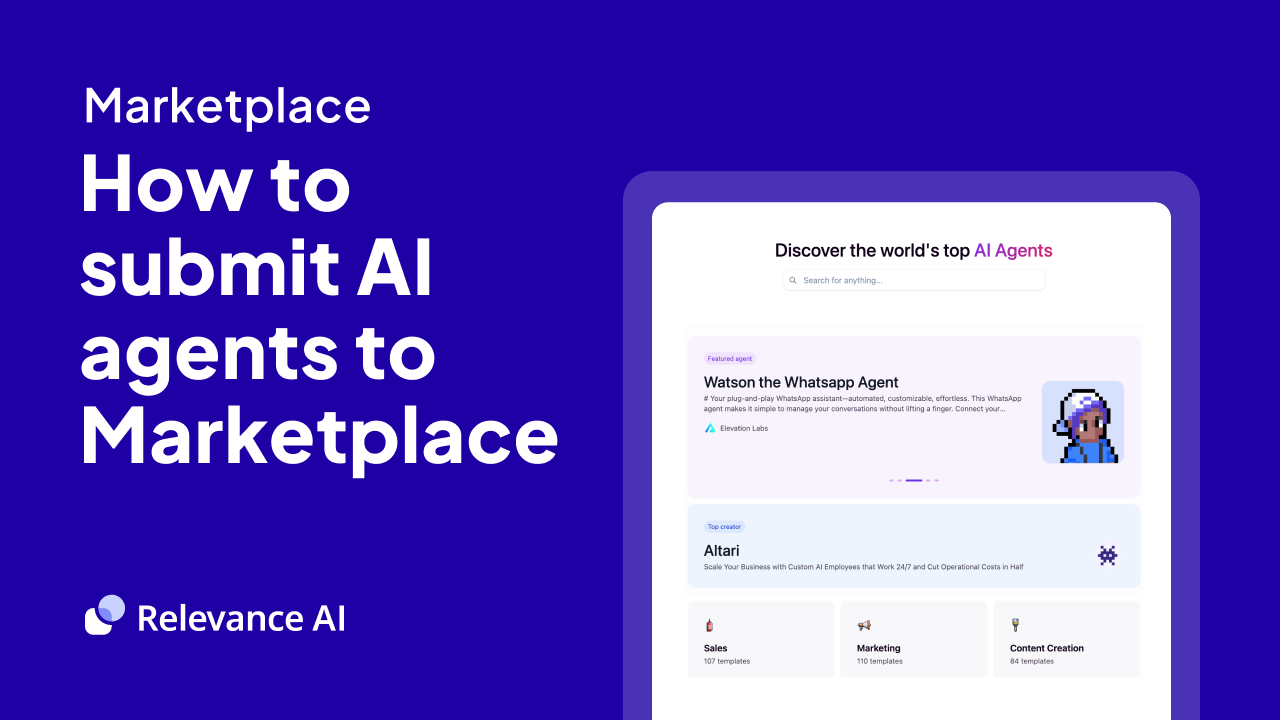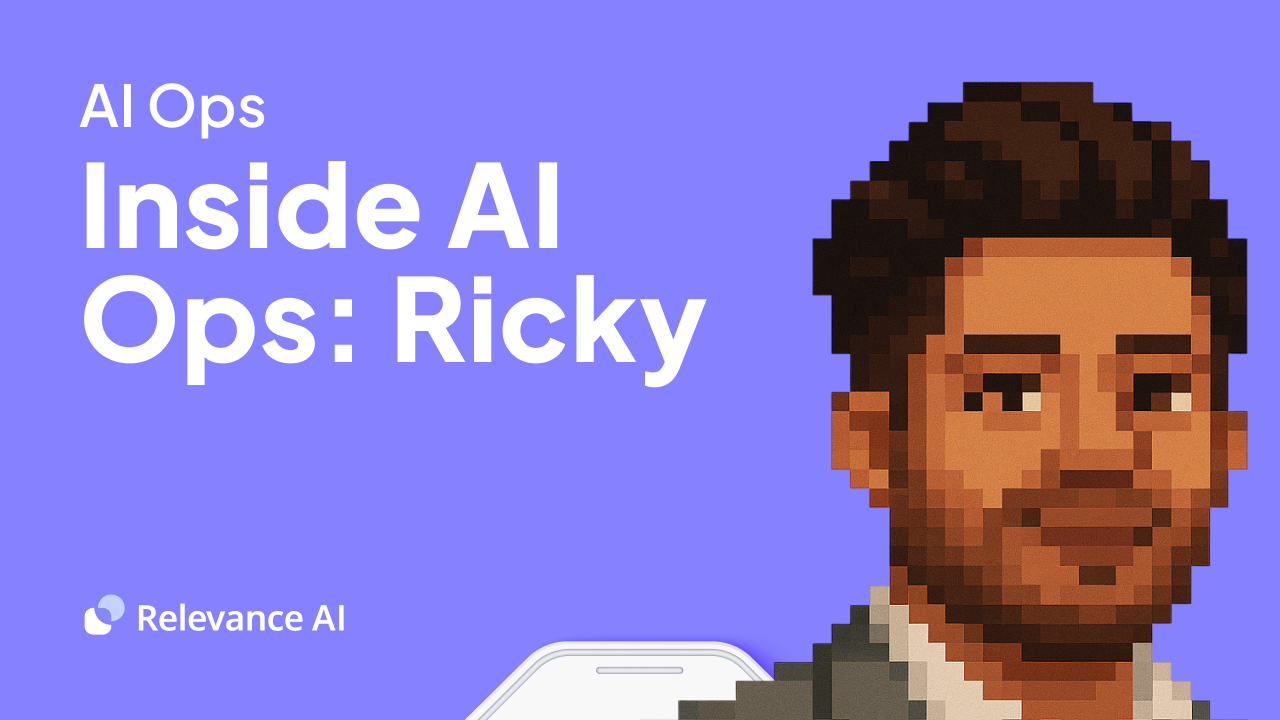
1) What’s your role today - and what’s your favorite part of it right now?
I’m building out AI Ops, which means I’m inventing my job as I go. The role sits at the intersection of architecture, governance, and experimentation-designing frameworks, building agents, and making sure they actually behave. My favourite part is that it’s uncharted territory. There are no handbooks, so every day is an opportunity to draw the map while walking it. I get to design guardrails, experiment with workflows, and see new ideas go from “impossible” to production. It’s like laying track for a train while the train is already moving.

2) What problem recently kept you up at night – and how did you untangle it?
The classic nightmare: how do you stop an agent from saying things you never wanted it to say? Instead of reinventing the wheel, I borrowed from fields that have been fighting this battle for decades—compliance and cyber security. I combined their principles into a layered system of filters, logging, and safety canaries. The trick is to assume some minuscule probability of failure for each created filter, and layer them together until the probability of all layers failing is so tiny, you'd be sitting there for decades trying to get the stars to align.
3) In one line, how do you define AI Ops from your seat?
The craft of designing, governing, and running agents as if they’re teammates-safe, useful, and integrated into the bloodstream of the company.
4) Before → After: one workflow you’ll never do manually again
Before: I have multiple mailboxes and all of them receive daily emails of varying importance, from newsletters, subscription renewals, meeting notifications and customer communications to marketing emails from that one site you needed one thing for four years ago. I was not going to keep on top of my emails alone, and I definitely did not want checking my email to be a chore I had to do. So, I built myself an email sorting workforce!
After: All emails that go into any of my inboxes go straight to the postwoman bot, who sorts them into Trash/News/Important. Once sorted and qualified, they go to my Obsidian manager agent who takes the email and calls my cloud-hosted Obsidian server to store.Once there, I can easily look through them or get a scheduled agent tell me what I need to follow up on and to even put it on my calendar as a task!
.png)
5) Tell us about an agent you’re proud of (name + job) and how you know it’s “good enough.”
Reece Sauce, a research agent I built. It’s highly agentic, multimodal, and designed to deliver large amounts of research at a reasonable price. The whole point is simplicity and reliability-build it once, and it quietly does its job without fuss. Reece Sauce became so effective it’s now a common component in many of my builds. You know an agent is good enough not when it dazzles, but when you stop thinking about it as “special” and just rely on it like infrastructure. Reece Sauce is that kind of dependable.
.png)
6) Where must a human stay in the loop - and why?
Humans need to stay in the loop for brand, relationships, and edge cases. AI can handle rules, but it can’t feel nuance. Sometimes the right decision is to break the rules, or to interpret silence, or to say nothing at all. That’s where human judgment lives. The loop isn’t just about safety-it’s about trust. If people don’t trust the system, they won’t use it. So humans remain essential where meaning, tone, and intent matter.
7) A favorite failure → rule story
My first failure at Relevance was memorable. I hooked one agent to my work email and another to my personal email. To test, I had the work email agent send a message to my personal inbox-forgetting that the personal inbox was also running an agent. Then I went home.
Next morning: 200 emails bouncing back and forth between the two agents.
whoops.jpeg
ohnoillbefired.jpeg
saysorrytoboss.jpeg
turnsoutitsfine.jpeg
The new rule? Never test production agents on real accounts without guardrails. Always use a sandbox first. Lesson learned the chaotic way.
8) Looking 12 months ahead, what do you hope feels normal — and what will you personally spend more time on?
I hope the concept of AI as coworkers and copilots becomes normal-where it’s second nature to treat agents as reliable teammates in every workflow. Personally, I want to spend more time building the discipline of AI Agents. That means treating the full lifecycle-ideation, build, governance, maintenance, and documentation-not as a side project, but as a career path in itself. I’ll still build agents, but the bigger mission is shaping the field so “AI Ops” feels less like an experiment and more like infrastructure.
Quick Fire Questions
1. Next thing you’ll automate
conveyor-belt system for creating, distributing, and measuring compliant agents
2. Tool you can’t live without
The Universal Researcher tool I made for Reece Sauce (a combination of google search, website scrape and document extraction)
3. One-line advice
The field is set. Chaos abounds and so does opportunity. Seize the moment and see how you can get ahead with automation. Many things are possible now, and we’ve only scratched the surface. I’ve gone over a line and I don’t care.











